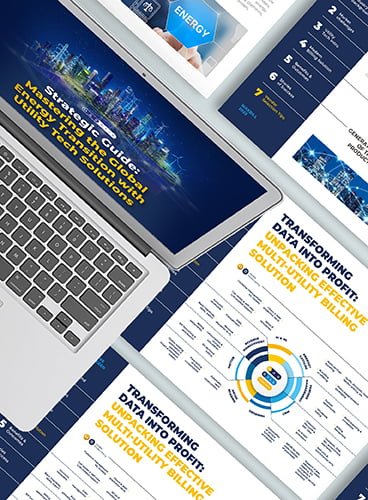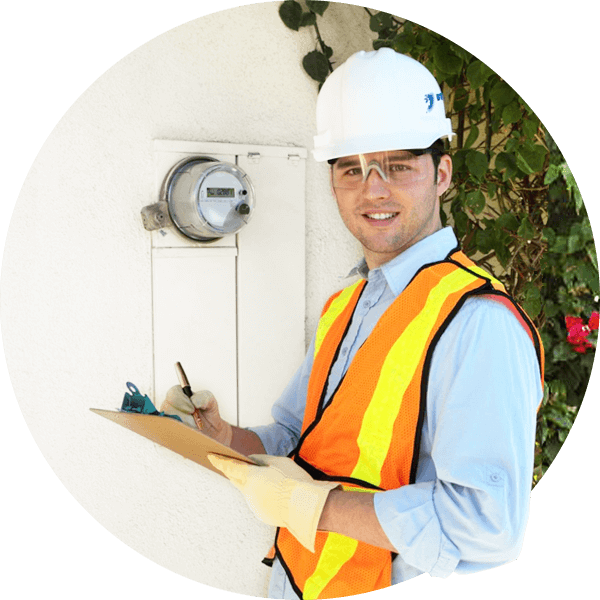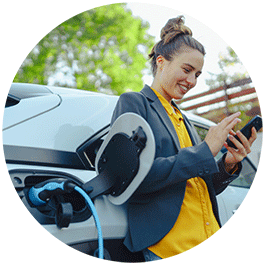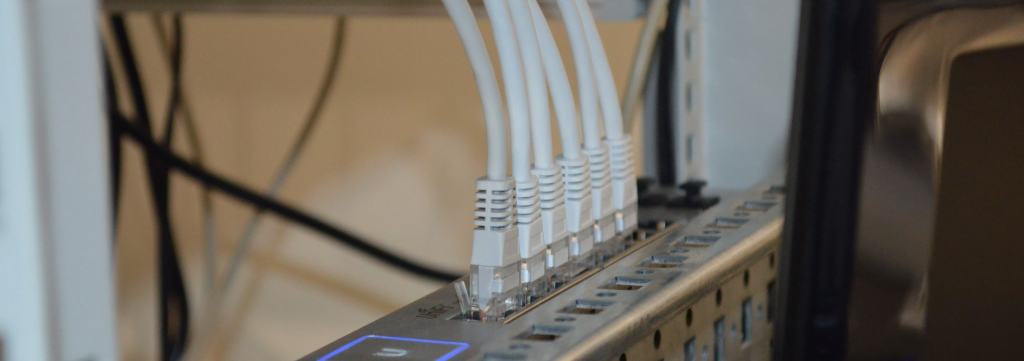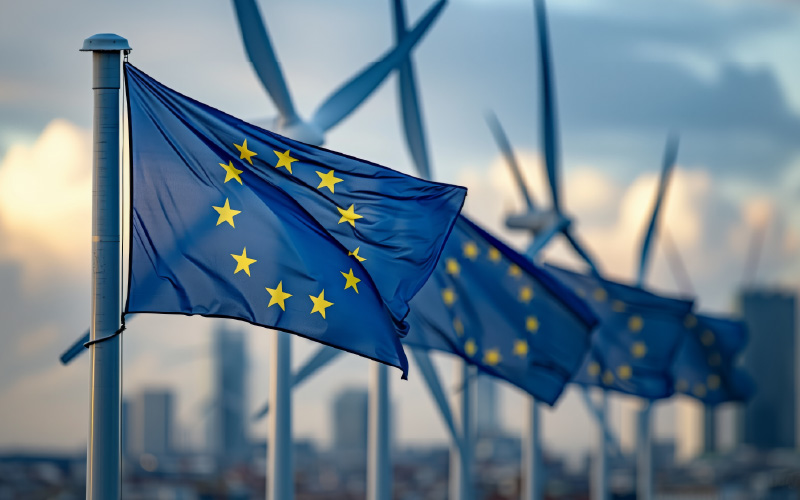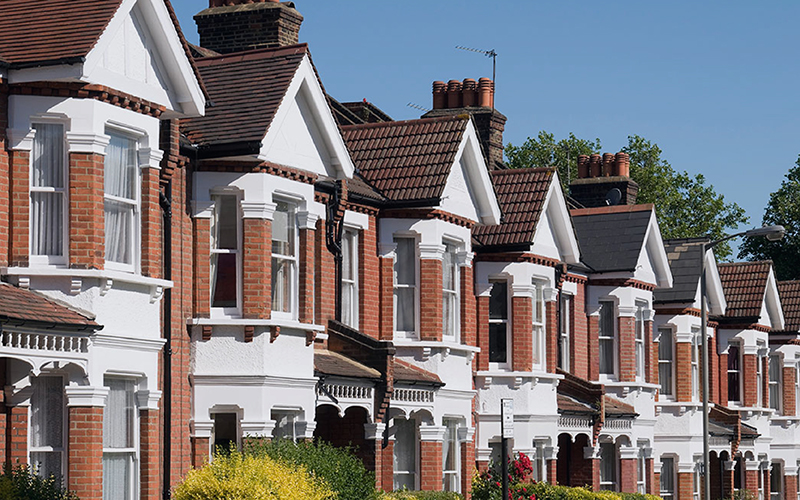June 2025 (updated)
Smart meter installation across Europe is one of the reliable ways to achieve net-zero ambitions. First Utility (now Shell Energy Retail) addressed MaxBill the other day to get support in implementing its innovative approach to home energy.
One of the key points of the company’s transformation was the introduction of smart meters to ensure accurate billing and give users greater control over energy consumption.
At the end of the collaboration, Shell Energy Retail was able to access and utilise real-time usage data from smart meters, transforming these readings into competitive advantages and extracting full value from their customers.
At the macro level, to maintain a cost-effective and responsive grid in the future, everyone needs to have a smart meter. For utility organisations, smart metering requires efficient meter reading management and billing systems.
So, in this piece, we’ll explore:
- The smart meter roll-out situation across Europe (find your country!)
- What makes smart metering so pivotal and beneficial when unlocking full potential for utilities and end customers?
Without further ado, let’s get started!
Key takeaways
- Smart meters are pivotal components of modern smart grids.
- The real-time monitoring capacity is essential for power grid stability and integration of Renewables.
- The adoption of smart meters in Europe will rise to approximately 78% by 2028.
- By 2025, ~ 60-70 million smart gas meters should be installed across Europe.
- Customer resistance is one of the reasons for low adoption.
- Smart meters streamline demand response programs and dynamic pricing and improve billing cycles.
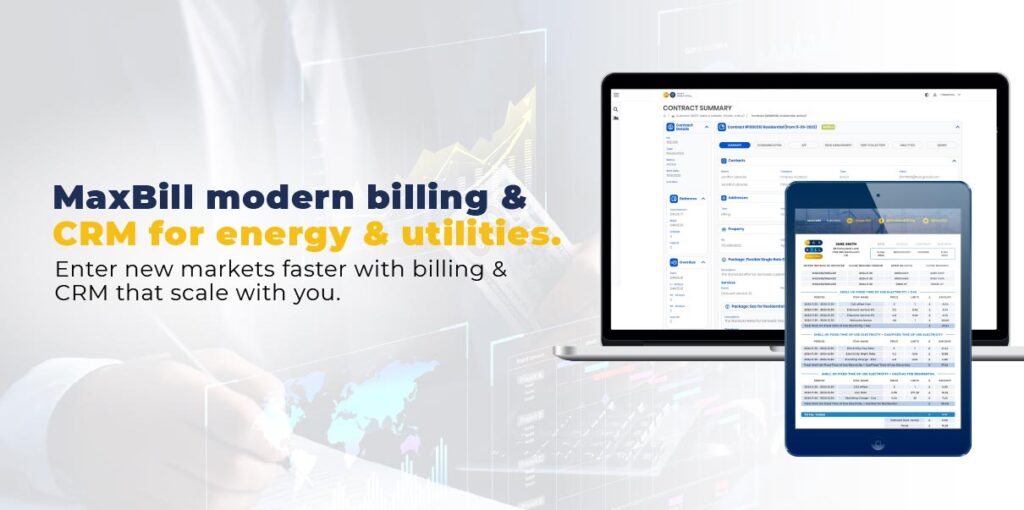
Why smart meters?
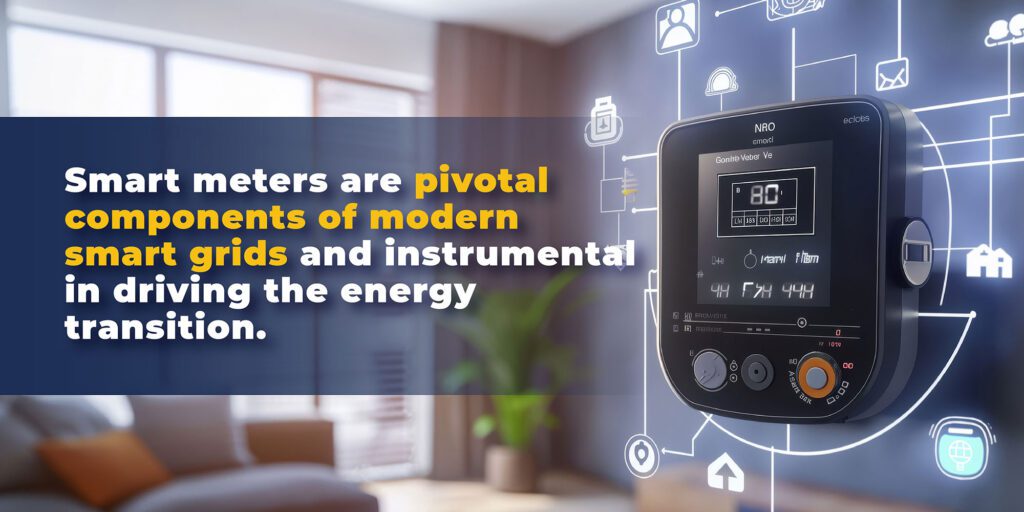
Recent research by ACER reveals that half of the 27 EU member states have completed their national rollouts. However, several countries, including Bulgaria, Cyprus, the Czech Republic, Germany, and Greece, demonstrate very low penetration rates of this technology.
Are smart meters good?
Smart meters are pivotal components of modern smart grids, in the first place. They serve as the crucial link between consumers and energy distributors, allowing Distribution System Operators (DSOs) to manage electricity demand through real-time data monitoring efficiently. This real-time capability is essential for ensuring the reliability and stability of the power grid.
Smart meters are instrumental in driving the energy transition. By providing DSOs with the ability to monitor energy production in real time, they facilitate the integration of renewable energy sources (e.g., solar panels, EVs).
This real-time monitoring is critical for managing the intermittent nature of renewables, thereby supporting a more stable and efficient clean energy transition.
Additionally, smart meters offer end customers detailed insights into their energy consumption patterns, promoting more sustainable behaviours and greater energy efficiency.
Now, let’s break down the smart meter roll-out situation by country.
Europe smart meter overview
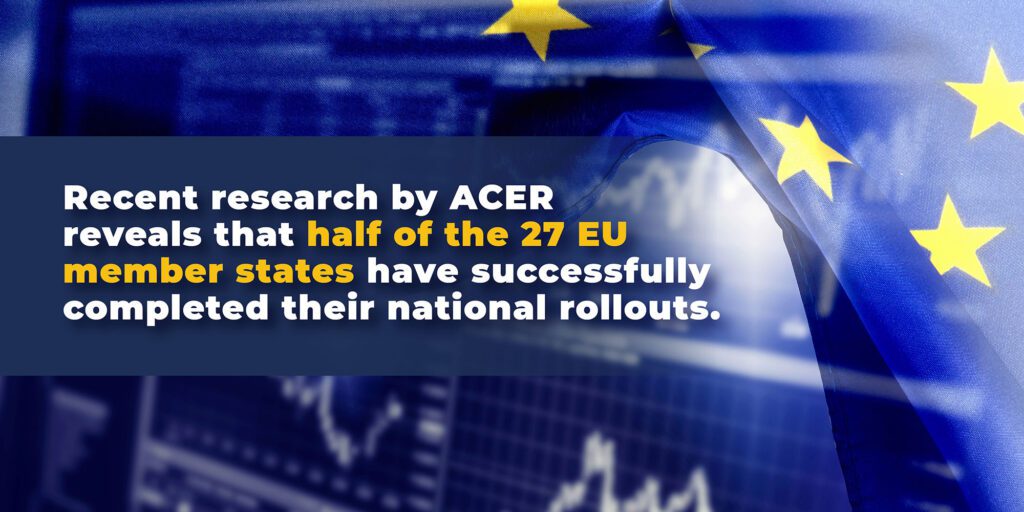
According to Berg Insight, the adoption of smart meters in Europe is projected to rise from approximately 60% in 2023 to 78% by 2028.
Looking forward, Berg Insight forecasts that over 88 million smart electricity meters will be installed across Europe from 2024 to 2028.
During this period, it is anticipated that replacements of first-generation smart meters will constitute 25-40% of the total smart meter shipments in Europe, equating to 4-8 million units per year over the next five years.
Smart meters in the UK

Based on the data of the UK Department for Energy Security and Net Zero, by late 2023, 34.8 million smart electricity and gas meters were installed in homes and small businesses in the UK. This makes up 61% of all devices set up in the country.
Of these, 20.2 million were smart electricity meters and 14.5 million were smart gas meters. About 30.8 million meters (54%) were operating in smart mode, with the remainder in traditional mode.
In January and February 2024, an additional 424,000 smart meters were installed, continuing the upward trend from late 2023. As of early 2024, 30.2 million smart meters are connected to the DCC network.
2025 Update:
As of March 2025, there were about 39 million smart (or “smart/advanced”) meters installed in homes and small businesses across Great Britain
Smart meters in Sweden
As of May 2024, Sweden had received shipments of approximately 1.4 to 1.5 million units.
2025 Update:
Sweden is somewhat of a special (and advanced) case when it comes to smart meter deployment. Sweden achieved essentially 100 % coverage of “automatic metering” (largely via smart or remotely readable electricity meters) relatively early.
Because essentially all of those meters are already “smart/automatic reading capable,” one can interpret that by 2025, virtually all 5.4 million (or slightly more, accounting for replacements or new connections) are smart meters.
Smart meters in Italy
In 2022, Italy led the market in smart meter installations, with approximately 2.6 million units deployed that year.
By May 2024, the country had completed the first-generation rollout, covering 36.2 million smart meters. The second-generation rollout, with 30.2 million smart meters, was 82% complete.
2025 Update:
By 2025, Italy likely has on the order of 30-40 million smart/advanced (electric) meters installed. The exact total depends on how “smart/advanced / generation 2.0” is defined, and how many older smart meters are being replaced.
Smart meters in France
For France, the dominant smart electricity meter program is the Linky rollout by Enedis. In the country, 37.9 million meters have already been installed, achieving a 93% coverage rate.
2025 Update:
The electricity smart meter coverage is extremely high; essentially, nearly full coverage (over 90 %) of French electricity customers are expected to be served by Linky by 2025.
The estimate is that about 37–38 million smart (Linky) electricity meters in France should be installed by 2025.
Smart meters in Spain
Stats vary based on many sources. According to Berg Insight (in its “Smart Metering in Europe” report), Spain is expected to become a significant market for second-generation meter installations in the mid-2020s.
2025 Update:
By 2024/2025, Spain likely has at least ≈ 12–13 million smart electricity meters installed.
Smart meters in Germany
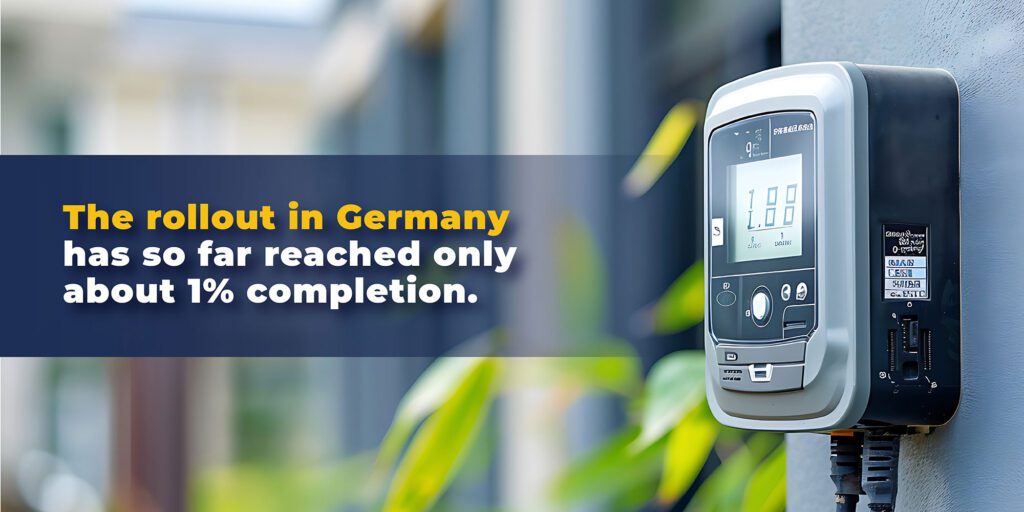
The rollout in Germany has so far reached only about 1% completion. However, Germany is preparing for a significant expansion in smart meter installations following a recent government mandate requiring a national roll-out for both commercial and residential customers starting in 2025.
2025 Update:
By the end of 2025, Germany will have somewhere between 1.5 million to 2 million true smart/intelligent metering systems installed (or perhaps somewhat more, depending on acceleration), but still covering only a modest share of the total metering points.
Number of electricity smart meters installed across European countries, including the percentage of smart meters relative to total meters:
| Country | Number of Smart Meters Installed (2025) | % of Total Meters |
| United Kingdom | 30 million | 80% |
| France | 35 million | 90% |
| Germany | 8 million | 10% |
| Italy | 44 million | 98% |
| Spain | 29 million | 99% |
| Netherlands | 7.5 million | 95% |
| Sweden | 5.4 million | 100% |
| Finland | 3.7 million | 99% |
| Denmark | 3.3 million | 98% |
| Belgium | 2.5 million | 40% |
| Poland | 10 million | 40% |
| Portugal | 6 million | 90% |
| Greece | 1.4 million | 25% |
| Czech Republic | 1 million | 15% |
| Hungary | 0.8 million | 10% |
| Ireland | 1.2 million | 80% |
| Bulgaria | 0.4 million | 10% |
| Romania | 1.8 million | 20% |
| Slovakia | 0.6 million | 10% |
| Croatia | 0.3 million | 20% |
| Slovenia | 0.5 million | 50% |
| Estonia | 0.7 million | 98% |
| Latvia | 0.9 million | 100% |
| Lithuania | 1.5 million | 90% |
This table summarises the available data on smart meter deployment in Europe, showing the progress in the adoption of smart grid technologies.
Gas smart meters installation across Europe
In 2023, the penetration rate of smart gas meters across Europe reached 45%, with a projection to increase to about 62% by 2028, according to Berg Insight.
The installed base of smart gas meters in Europe totalled 55.9 million units in 2023 and is expected to grow to 77.6 million units by 2028, reflecting a compound annual growth rate (CAGR) of 6.8%.
The annual shipment volumes were 4.8 million units in 2023, and are anticipated to be between 5 to 5.8 million units throughout the forecast period.
2025 Update:
A plausible estimate is that by 2025, ~ 60-70 million smart gas meters are installed across Europe (i.e. covering ~ 50-55 % or more of gas customers, depending on region).
Key Markets and Installations:
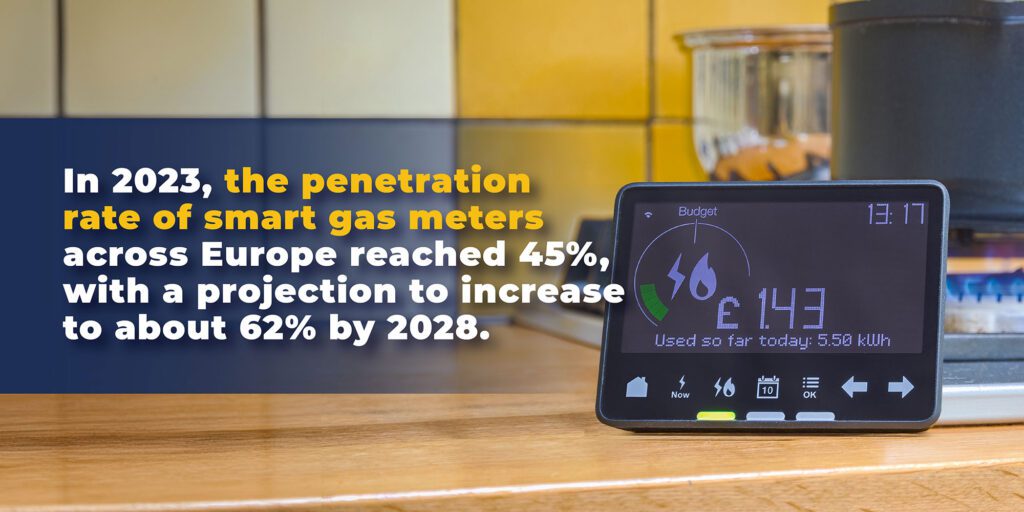
British smart meters overview, Italy, and Belgium: These countries were the most active markets in 2023, accounting for the majority of smart gas meter shipments. The UK, in particular, is ramping up its yearly installations, aiming to peak at around 3.3 million units per year during 2024–2025.
Italy, France, and the Netherlands: The rollouts in these countries are largely complete. Italy has been a pioneer in adopting NB-IoT as a primary connectivity choice for smart gas meters, reaching an installed base of over 2.5 million units with NB-IoT connectivity in 2023.
Belgium and Ireland: These countries are expected to continue contributing significantly to shipment volumes in the coming years.
Spain: The Spanish market is projected to reach yearly shipment volumes of 1 million units by the end of the forecast period.
Customer engagement as a bottleneck to smart meter popularity
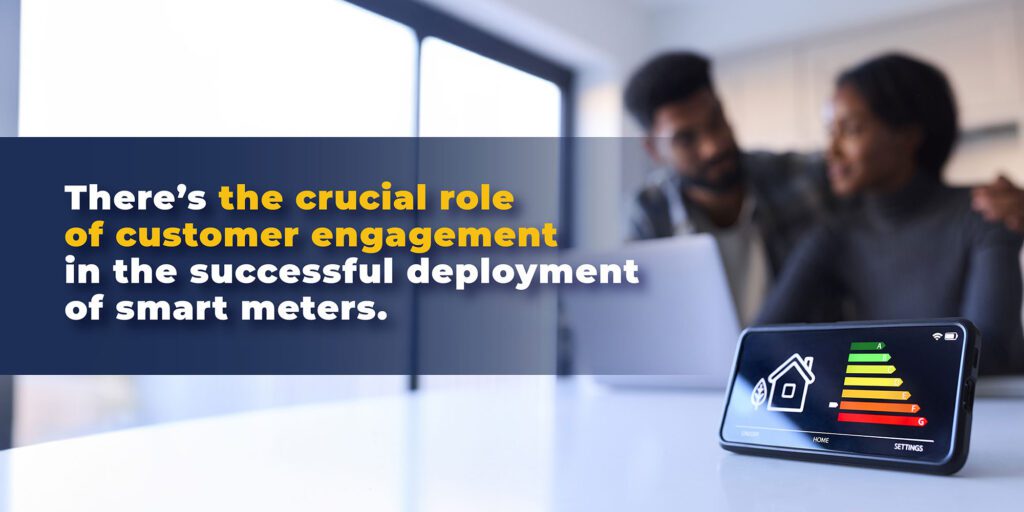
The problem stems from varying levels of customer participation, as seen in the analysis of homes registered with suppliers’ mobile apps for managing energy use.
For instance, only 12% of homes in Italy are registered, compared to 31% in Spain and 20% in Great Britain. This variation highlights the crucial role of customer engagement in the successful deployment of smart meters.
David Trevithick, head of Digital at LCP Delta, emphasizes the dual necessity of a complete smart meter roll-out and active customer participation.
He notes that relying solely on mandates risks disengaging customers, whereas an opt-in approach could delay the full roll-out by a decade.
The key challenge for policymakers is to engage the remaining customer base promptly to expedite smart meter deployment beyond the natural meter replacement cycle.
To address this issue, there are several strategies:
- Raise awareness and use targeted communications: Smart Energy GB should enhance awareness campaigns and use targeted communications to highlight the value and benefits of smart meters, especially to reach consumers who are difficult to engage.
- Offer attractive propositions: Energy retailers should create appealing smart meter-enabled offers that provide consumers with more control over their energy use and lower their energy bills.
- Government accountability and support: The government should hold energy suppliers accountable for the roll-out and demonstrate strong commitment to the smart meter initiative. This support can give metering companies the confidence to invest in the market.
- Address data privacy concerns: Energy regulators need to address consumers’ data privacy concerns by reassuring them of the robust infrastructure and high level of resilience and protection offered by the smart meter system.
Key benefits: demand response programs, dynamic pricing, and improved billing cycles
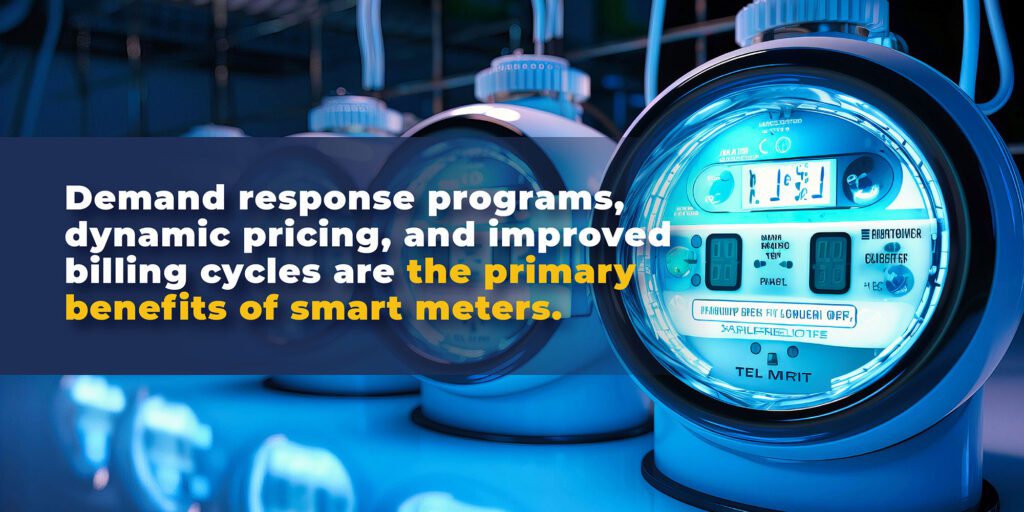
Demand response programs
Smart meters supply utilities with real-time data on energy consumption, allowing them to monitor and manage electricity usage more effectively. During peak periods—when electricity demand is highest—utilities can use this data to identify and respond to spikes in consumption.
By sending signals to consumers to reduce their energy usage during these times, smart meters facilitate demand response programs.
For instance, consumers might be encouraged to delay using high-energy appliances like washing machines or dishwashers until off-peak hours, such as late in the evening.
Benefits to utility organizations:
- Cost savings: By reducing the need for expensive and less environmentally friendly power generation methods during peak demand, utilities can lower their operational costs.
- Environmental impact: Minimizing the use of polluting power sources helps to reduce greenhouse gas emissions and improve air quality.
- Grid stability: Smoothing out demand peaks can prevent overloading the grid, enhancing overall reliability.
Dynamic pricing
Smart meters enable dynamic pricing by providing the necessary data to adjust electricity prices based on real-time demand. During peak demand periods, electricity prices can be set higher, while lower prices can be offered during times of low demand.
This pricing model incentivises consumers to use electricity during off-peak times, aligning their consumption patterns with periods when energy is more readily available and cheaper.
Benefits to Utility Organisations:
- Load management: Dynamic pricing encourages consumers to shift their energy usage to off-peak times, reducing the overall load on the grid during peak periods.
- Renewable energy utilisation: By aligning consumption with periods when renewable energy generation is high, utilities can maximise the use of sustainable energy sources.
- Consumer engagement: Providing consumers with real-time information about energy prices helps them make more informed decisions about their energy usage, fostering a more responsive and engaged customer base.
Related:
Dynamic Energy Contracts to Harness Price Volatility and Get Loyal Customers
Improved billing cycles
The introduction of smart meters enables energy suppliers to convert customers from bimonthly to monthly billing cycles. This change allows customers to manage their expenses more effectively by leveraging energy billing software that provides more frequent and accurate billing information, which helps in budgeting and monitoring usage.
Smart metres, read management, & billing make it work
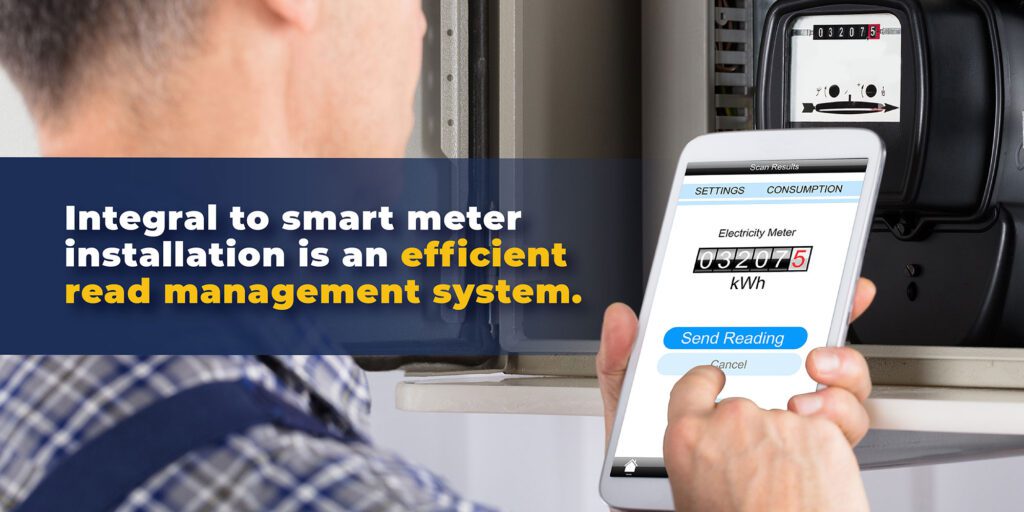
Integral to smart meter installation is an efficient smart meter reading management. Let’s outline what it suggests.
An efficient smart meter reading system encompasses several critical components to ensure accuracy, reliability, and comprehensive data management. It must accurately validate, estimate, and edit meter reads to calculate consumption for specific periods, tracking all consumption history and collecting detailed information about equipment installed at each service delivery point.
Enhancing the validation process with real-time capabilities is crucial, supporting both dependent and independent validations triggered by events like billing date changes or meter exchanges.
Automatic read recalculation ensures ongoing accuracy, reassessing readings upon receipt of historically valid data.
Related:
Success stories: Shell Energy Retail
What Is Net Metering, and How Does It Work?
What is Utility Submetering? How Does It Work?
Do you need modern billing that includes a robust meter reading management module? Contact our team.
Smart meters FAQ
Do smart meters include standing charges?
Yes, smart meters do include standing charges. The MaxBill tenant billing system uses accurate automated meter readings combined with standing charge and tariff information provided by landlords to calculate tenants’ bills. This ensures that all relevant costs, including fixed charges such as standing charges, are included in the billing process. The system can then generate and issue comprehensive bills that encompass these charges along with the actual usage readings.
How does the bill look for smart meters for residential landlords?
The bill generated by smart meters for residential landlords is detailed and comprehensive. It includes accurate automated meter readings along with standing charges and tariff information provided by the landlord. The system can generate either monthly or quarterly bills, covering all general utilities like gas, water, and electricity.
In addition to utility usage, the bills can also incorporate costs for fixed price amenities such as Wi-Fi, making the process straightforward for both landlords and tenants.
This automated approach eliminates the need for manual meter readings, reduces the risk of billing disputes, and saves time and money for landlords. Furthermore, the cost of the billing service can be included in the tenant’s bill where appropriate, ensuring complete transparency and convenience in the billing process.
